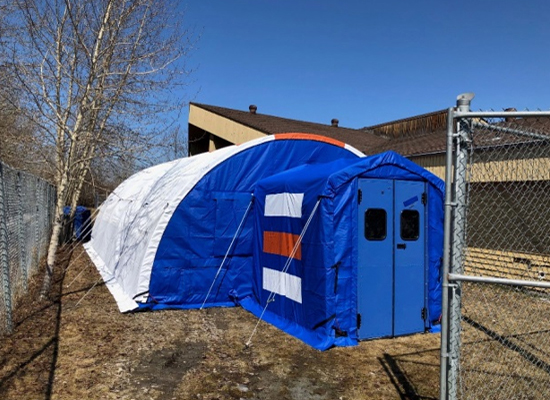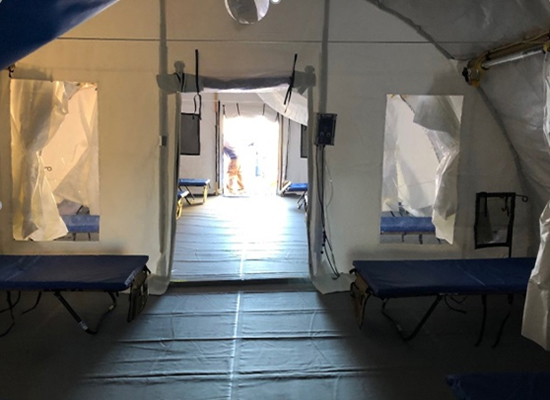Creating community space to face COVID-19
Community health infrastructure is key to First Nations' response to Coronavirus. Indigenous Services Canada (ISC) has been working closely with First Nations to ensure they have what they need to prepare for and prevent the spread of the coronavirus.
A community's ability to respond to a public health crisis centers on its health facility, where community members can seek health information and advice from medical professionals, get tested and receive treatment.
In support of each community's preparedness, ISC has asked communities to monitor their:
- stock of personal protective equipment for medical personnel
- medications
- health professional surge capacity
- physical spaces that can be used in the event of a community outbreak
During the pandemic, ISC has been working with communities to assess the availability and suitability of physical space that could be used in the event of a community outbreak, as part of their overall pandemic planning. Through this process, First Nations communities identify existing facilities such as band offices that can be used as temporary spaces for triage or screening purposes, isolation of community members, or accommodation units for health care staff. ISC then provides the community with funding, supplies and equipment to ensure the re-tooled space is operational and ready for its intended purpose during an outbreak response.
If existing spaces are not available for re-tooling, ISC provides funding for the purchase of mobile health structures, which they can procure directly through vendors. Mobile health structures must meet the high technical specifications for use as clinical and accommodations spaces required to respond to a disease outbreak.
ISC's response to COVID-19 by the numbers.


Re-tooling community space
First Nations communities have been open to exploring creative solutions to respond to the spread of the coronavirus. Those solutions look different in every community across the country. For instance, many communities in Saskatchewan have converted their local schools into clinical and isolation spaces that can accommodate many patients, should the need arise.
Using existing community spaces for surge health infrastructure has been the preferred option in First Nations communities during the initial wave of the pandemic because, in the event of a crisis:
- it uses spaces familiar and friendly to community members
- converting the space enlists the community's resources and expertise
- management and coordination rests with the community leadership
- the projects build local pride in facing and overcoming challenges of a global pandemic
Because of the easing of public health measures and gradual reopening of public spaces, schools in particular, this option has become less feasible as the pandemic evolves.